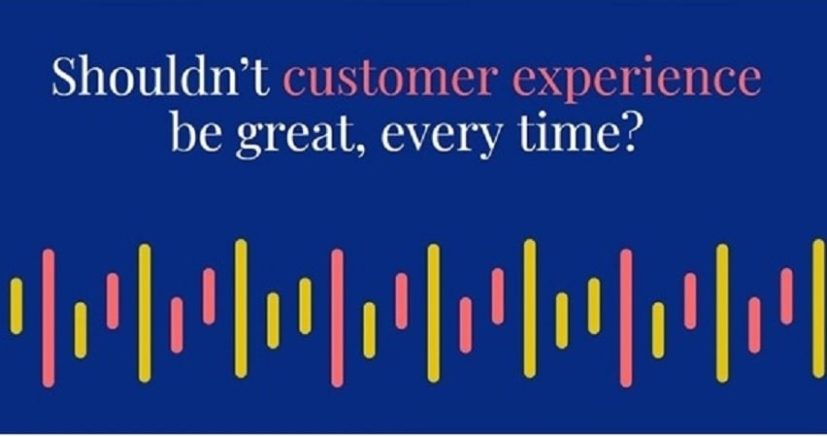Customer data: businesses’ best weapon in the never-ending customer satisfaction battle in the contact centre
Customer satisfaction as a differentiator is nothing new, but the ways in which that satisfaction can be met has evolved dramatically in recent years. Today, the storage, analysis and application of customer data across the entire consumer experience is set to be the new necessary for service providers – especially given heightened post-pandemic customer expectations.
With more customers using online as a primary portal, while still expecting the personability of service that they’d receive through direct communication, the onus on businesses has doubled. Not only must they use customer information to inform more bespoke service offerings; they must do this through a unified view of said customer data. Bringing together both these requirements is the overarching need for more intuitive, silo-breaking and integrative application development.
Joining up the dots

It becomes a minefield for both the customer and the business’s employees to maintain a sense of consistency, visibility or understanding when there isn’t a unified context to work from. What’s really required is a conjoined view of that customer’s data – a view that truly represents both the engagement, and prospective tasks. A view that provides both ongoing and real-time insights that enable businesses to deliver a level of service that instils trusts and retains custom.
Step one is finding an optimum way to attain and store data – something which sounds obvious, but that many organisations have struggled to master. Failing to address this most significant of aspects is often the reason why the end view is so fragmented, unattainable or unproductive.
Part of the issue is knowing where to turn to when moving away from legacy operations. After all, modern software solutions by their very nature showcase smart, digital ways to integrate, creating a difficult decision before you’ve even thought about the use of data. Outsourcing is a common solution to this end, but this also incurs the possibility of vendors charging you more to actually access your own data – the very reason you sought to upgrade in the first place.
This is where robotic process automation (RPA) has found a niche and an appeal – and offered a solution. It extends the scope of automation to include all types of applications (Windows, green screen terminals, and even hand-written documents), alleviating some of the pressures from those initial, specialised options. With RPA, you don’t need individual API-connectivity solutions, as leading low-code platforms will already have all the data interchange methods you need. It’s a simplified, unified, solution to a complex problem.
Follow the feedback loop

By collecting feedback using appropriate channels and processing data in workflows, immediate action can be taken in relevant business units – but in a way that also informs adjacent units so that an overall picture is formed. This naturally aids the process of monitoring and reporting on customer trends – both individual and as an overall customer base.
This way of working requires a bit of a mindset shift. In the race for customer insight, too often data collation is treated as a starting gun which launches strategy from then on. Rather, optimum customer service is a marathon, not a sprint. Or better still, through feedback data, it should be a never-ending race.
Feedback data will highlight failures, breaks in processes, poor customer journeys and recurring obstacles. It will also help to identify areas for improvement on a continuous basis. Trends, consumer preferences and markets – as we’ve seen – can change quickly, so it’s vital to create an infrastructure that simply and effectively generates feedback in an evergreen and adaptive way.
Low-code paves the way for a positive, customer-centric cycle

By fostering trust and loyalty, it also becomes more likely that customers will continue to share data with you, ensuring more credible and useful data in the future… and so the positive cycle continues.
It’s a theory that has traditionally fallen down, even in the most high-profile of places. In the US, due to federal mandate, the majority of US hospitals have patient portals, but they are not used by the majority of patients. Now imagine how damaging that lack of input is across numerous disjointed apps or platforms – which is the norm for most organisations.
Put simply, businesses should start with the desired outcomes for all stakeholders, then define the ideal process that revolves around personalisation and feedback. And to build such an infrastructure, and create such a unified infrastructure, business should aim high, by turning to low-code.
With the need to attract, satisfy and retain customers being more important than ever before, businesses need a simple and unified solution to handle their increasingly growing information stream. Low-code is the way to achieve just that, and ensure that your organisation wins the increasingly hard customer satisfaction battle.

Netcall is a leading provider of low-code and customer engagement solutions. A UK company quoted on the AIM market of the London Stock Exchange. By enabling customer-facing and IT talent to collaborate, Netcall takes the pain out of big change projects, helping businesses dramatically improve the customer experience, while lowering costs.
Over 600 organisations in financial services, insurance, local government and healthcare use the Netcall Liberty platform to make life easier for the people they serve. Netcall aims to help organisations radically improve customer experience through collaborative CX.






